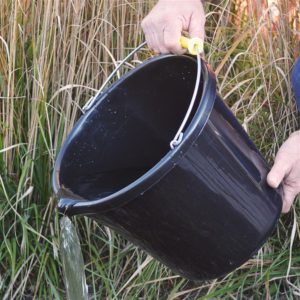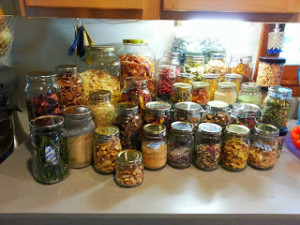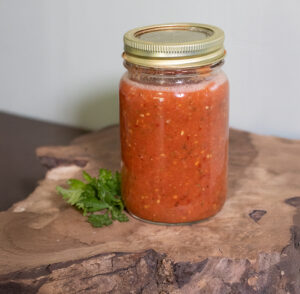A well-kept lawn says as much about a person as good grooming, healthy looking livestock or pets, or a spotless fit and finish on his or her choice of transportation or home. I’ve heard it said that attention to details makes the man, but attention to the lawn can make the whole property.
Summer lasts a long time. To keep a good looking lawn you have to be diligent in the upkeep, water during times of drought, and weed and take care of pests regularly. All that said, the most important time of the year for your lawn is spring.
Starting right now, there’s plenty to be done to improve the space between the road and the front door. The steps include having the right equipment, as well as an assortment of dethatching, aerating, fertilizing, watering, mowing and addressing problems with weeds and pests. In late winter or early spring I start assessing the entire lawn. I take a slow walk around and make a fresh note of dead spots and thin areas in the grass. I mow this lawn at least every couple weeks all summer long, and I have for the past two decades, but it’s important to mark the seasonal changes.
Next, I bend down and rake my hand through the brown stems. I part the foliage and look for matted undergrowth and piled up thatch which can hold in excess moisture and lead to grass-killing mold.
If you’re like me, and I suspect most landowners are, you started thinking about mowing grass with the first unseasonably warm day in March. But you don’t want to rush the season. Let the grass get a good start on the season’s growth before mowing that first time. Also you’ll want to make sure the grass is dry and the mower blades are sharp. Mowing a wet lawn, or with dull blades, can rip and beat the stems – resulting in unhealthy grass blades that can turn brown on the tattered ends.
Prepare equipment first
Early season is a great time to prepare your mowing equipment. Whether a reel mower or rotary blades, or even if you prefer to trim green spaces with a scythe, clean your equipment and sharpen the cutting edges. Grease or oil all moving parts.
If your machine is a power mower, change the oil if you didn’t last fall. Hopefully you drained the fuel or added an additive before storing the machine for the winter. Fill it up with fresh fuel. A new spark plug never hurts. Cleaning and readying mowing and trimming equipment will appease your mowing urges until it’s really time to mow. Sharpen and hone scythes and hand clippers with a whetstone or garden tool sharpener. For larger blades, or edges damaged by hitting rocks, use a file first and then finish with a whetstone.
Dethatch and Aerate

Let’s get back to the lawn. If your close inspection turns up any amount of thatch hidden between the grass stems, the first thing you might want to do is dethatch. Doing so will remove the debris, and will allow more air around the grass plants. Your lawn is essentially a garden of millions of plants, and plants don’t grow well if they’re smothered. For a larger lawn consider buying, renting or borrowing a pull-behind dethatcher. I have one I use behind my garden tractor. Otherwise, consider using a steel-tined rake and work in small sections at a time to keep the job from getting overwhelming.
A good firm rake or pull-behind dethatcher can serve a second purpose. In all but the hardest clay topsoil, raking vigorously will also scuff up the surface of the dirt and aid in aeration and drainage. I know a guy who lives in town and has a relatively small lawn he maintains with a push mower. When mowing, he wears a pair of golf shoes with spikes. Wearing spiked shoes during your early season walk-around inspection would be a good idea as well. For larger lawns or those made up of hard clay soil, consider getting your hands on a plug or spike aerator to open up the topsoil before fertilizing.
Fertilize
There are many benefits to fertilizing a lawn. The extra boost makes grass thicker, more robust and vigorous against excessive wet or dry weather and disease. Fertilizers come in liquid, granules or capsules. Granulated fertilizers are easy to broadcast and release nutrients over time. Apply the first application when grass just starts to show signs of waking up from winter’s dormancy. Consider a second application about six weeks later.
A good general fertilizer for grass is a 30-10-10, or maybe a 29-2-4. All fertilizers carry a three number sequence. The numbers represent percentages of nitrogen, phosphorous and potassium. For instance a 30-10-10 would contain 30 percent nitrogen, 10 percent phosphorous and 10 percent potassium. Fertilizers for lawn grasses usually contain a high percentage of nitrogen and much lower amounts of phosphorous and potassium, while garden fertilizers are higher in phosphorous.
 I’ve talked about dethatching and aerating before fertilizing because that’s the order of the steps. By doing the steps in order you’ll provide a cleared, ready soil that will receive the fertilizer and allow it to reach the roots efficiently. Use a handheld spreader, or push- or pull-type spreaders for more acreage. I have both and prefer to use a handheld spreader when possible. Larger spreaders with a shoulder strap can carry 40 pounds of material or more. And most spreaders are multi-purpose, equally suited for spreading seed, ice melt or granulated pesticides. Just be sure to clean the hopper and moving parts well between uses to avoid any cross-contamination.
I’ve talked about dethatching and aerating before fertilizing because that’s the order of the steps. By doing the steps in order you’ll provide a cleared, ready soil that will receive the fertilizer and allow it to reach the roots efficiently. Use a handheld spreader, or push- or pull-type spreaders for more acreage. I have both and prefer to use a handheld spreader when possible. Larger spreaders with a shoulder strap can carry 40 pounds of material or more. And most spreaders are multi-purpose, equally suited for spreading seed, ice melt or granulated pesticides. Just be sure to clean the hopper and moving parts well between uses to avoid any cross-contamination.
In the next installment, I’ll look at the importance of proper watering, overseeding and mowing.




























[…] Part 1: Spring Lawn Care Tips […]